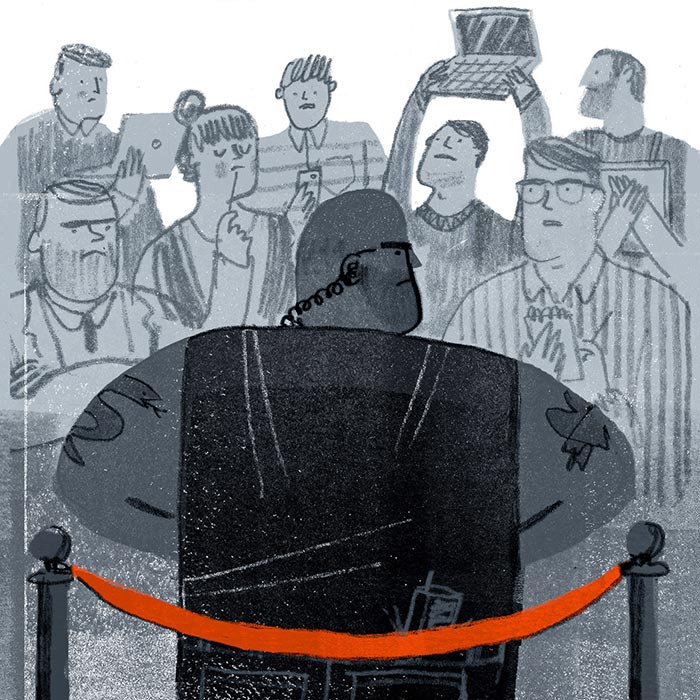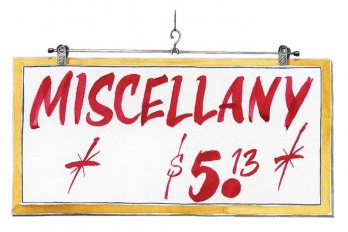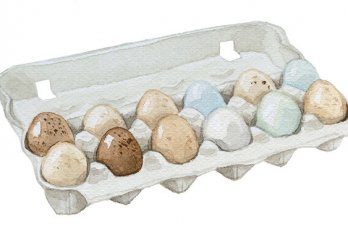
Christopher Waddell, director of Carleton University’s School of Journalism and Communication in Ottawa, recalls the Monday last October when the Globe and Mail announced its plan to erect a paywall. After his fourth-year students shuffled into the lecture hall for an 8:30 a.m. state of the media class, he called their attention to a statement posted on the Globe’s website, which he had projected onto a large screen. Calling it the next chapter in the newspaper’s history, editor-in-chief John Stackhouse outlined the particulars: readers wanting to view more than ten online articles per month would have to pay a $19.99 monthly fee. Print subscribers would get access for free.
Waddell, a reporter and editor at the Globe in the ’80s, next addressed the much larger global trend kicked off by the Wall Street Journal back in 1996. In Canada, Postmedia Network Inc. implemented paywalls at the Vancouver Sun, the Ottawa Citizen, and the Montreal Gazette last August. Sun Media’s papers in Ottawa, Toronto, Winnipeg, Calgary, and Edmonton followed. By the time the Toronto Star’s paywall goes up this year, all of Canada’s major metropolitan dailies will have entered their gated-community years. Finally, Waddell explained that this was a survival strategy. “Everyone had a good laugh,” he says.
Several months later, Peter McCartney, a twenty-one-year-old Calgarian who dreams of producing television documentaries, offers a more sober analysis: “My generation has an aversion to paying for things online.” Music, movies, The Walking Dead: users will beg, borrow, or steal anything that comes in digital format. “To pay for one article—it’s tough,” adds Sherry Aske, an aspiring broadcaster from rural New Brunswick. “I thought paywalls would never go anywhere and that they were more or less stupid.” But if future journalists refuse to buy in, who will? One study, by the Canadian Media Research Consortium, has found that 81 percent of adults surveyed would not pay for a preferred online news site.
These attitudes do not bode well for a struggling industry. Newspapers have long counted on earning 80 percent of their revenue from advertisers, with only 20 percent coming from paid circulation. But they have had to revise their revenue models as advertisers abandoned print and followed readers online. At first, publishers hoped to earn as much from digital advertising, but that has not happened. Online ads, considered less likely to grab readers’ attention, are simply not as lucrative.
According to former Wall Street analyst Mary Meeker, newspapers charge advertisers an average of $3.50 (US) for every 1,000 page views, and a measly seventy-five cents for the same number of views on a smart phone or other mobile platform. So even a popular article on a newspaper website would typically generate just $350 worth of ads. Some recent Postmedia numbers suggest how this affects the bottom line: compared to the same quarter last year, digital revenue from September to November 2012 increased by about 10 percent, a $2.2-million gain. This was obliterated, however, by a $16.6-million drop in print advertising.
Amid this free fall, newspapers are looking to readers to save them, by making a rather awkward request: please pay for content you have previously enjoyed without charge. Many who hit a metered paywall like the Globe’s will turn to aggregators like Reddit or the remaining free sites, such as CBC, while others will find a way around it. This is easy enough, according to Aske. All of her friends still read the Globe, by deleting their browsers’ cookie files, which track visits to websites. The Internet is full of instructions for such methods of accessing content locked behind a paywall, and anyway many people now read their favourite digital newspapers unfettered, by following story links from Twitter or Facebook.
The myriad flaws in the program make it an easy target for the doom and gloom hanging over the industry. Former Globe business columnist Mathew Ingram, one of the most vocal critics in the international debate on digital subscriptions, has written that “a paywall is just as likely to kill off [newspapers] completely as to save them.” In a more moderate mood, he has disparaged newspapers for not having a well-thought-out plan for survival in the digital age. Vincent Mosco, professor emeritus at Queen’s University in Kingston, Ontario, who has spent his career studying the economics of newspapers, concurs. “They’re throwing whatever they’ve got against the wall and hoping something sticks,” he says.
But while it is far too soon to tell how Canadian paywalls are doing, there is a beacon of light. By the end of September last year—eighteen months after the New York Times implemented a metered paywall—it had sold some 566,000 digital subscriptions (that includes numbers for the paper’s European sister, the International Herald Tribune). This new revenue stream, paired with a price increase on print copies, made 2012 the first year in which the Times ever earned more from circulation than from advertising; early projections for 2013 are even more promising. The lesson here may be that a paywall’s success hinges on content that readers deem worth paying for.
The lesson is not lost on Globe publisher Phillip Crawley. He, too, remembers well the day the paper announced details of its paid digital subscription. “I think everyone appreciates that this was a watershed event. The paywall is not just a new product; it’s a different way of doing business.” And, he says, it has come under particular scrutiny because of the Globe’s reputation for quality reporting: “People in the industry would probably say that if the Globe and Mail can’t make this work, it’s a bad day for everybody else.”
He says the paper is using the paywall to build a rich database of online readers’ ages, preferences, income, and location, because advertisers want to directly target potential consumers. For a price, this information will be made available to advertisers in real time, replacing dusty six- or twelve-month-old snapshots from NADbank (Newspaper Audience Databank Inc.) and the industry’s traditional tally of print readership. While more advertising dollars feed the business, editors will use this same information to attract readers.
Deciding if, when, and how to cover a given story has always involved a certain amount of guesswork. Crawley explains that discerning the meaning of readers’ browsing habits (to which end the company has enlisted BlackBerry analysts) will help the Globe’s journalists “know who they are writing for.” The paper already has experience curating Globe Investor Gold, a multimedia browser with streaming market data, which also delivers exclusive web content and email stock and fund alerts. Thanks to the paywall, Crawley says the Globe now has unprecedented access to readers’ likes and dislikes beyond the business section.
Waddell, one of the few observers who recognize the paywall’s potential, extrapolates a future in which readers could purchase only the news they want. For example, someone with a particular interest in sports or health care or provincial politics could subscribe to a feed of relevant stories. Or say a reader’s favourite writer is the Globe’s Roy MacGregor. Or Postmedia’s Andrew Coyne. What if that reader could have access to advance copies of the columnist’s work, or even special access to his expertise through online live chats? What if there were a digital subscription that aggregated all of that writer’s work for a special price?
The possibilities are endless, given sufficient imagination as well as the resources to allow for trial and error. Perhaps it is simply not possible, nor even desirable, to have a well-thought-out strategy this soon in the digital era. After all, only by flinging ideas at the wall can publishers expect one to stick. And a little desperation, in this context, can be most useful. The sole certainty is that the industry faces a buyers’ market, especially among the next generation of readers. “To get me to pay for it, they have to be doing their best,” says McCartney. “If they can’t do that, it’s on them. That’s not on me.”
This appeared in the May 2013 issue.



